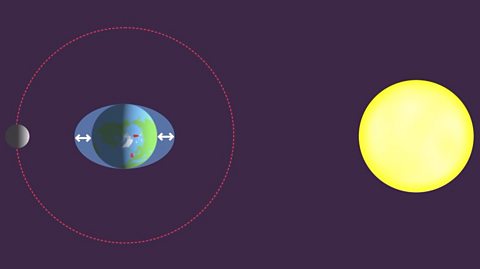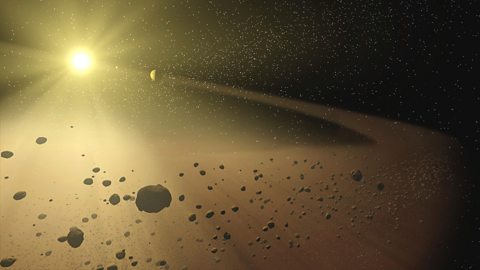Key points
Tides are the regular rise and fall of sea levels.
The gravitational pull of the Moon and Sun causes the tides.
Knowledge of the tides is essential to safely enjoy the seaside.
What causes tides?
An RNLI lifeboat volunteer explains what causes tides and their potential dangers.
What are the tides?
Tides are the rise and fall of sea levels around the world.
There are two high tides and two low tides each day.
The size of the high and low tides change over the month. During a full moon or a new moon the difference between the high and low tide is at its greatest. This is because when the Earth, the Sun and the Moon are in a line, the gravitational pull is at its strongest.

Why do we have the tides?
Gravity from both the Sun and the Moon pull water across the Earth’s surface. Just as the Earth pulls water downwards (in waterfalls, for example), the weaker gravitational pull of the Sun and Moon pull water sideways across the Earth.
Why do we have two tides a day?
As the Earth spins on its axis, the oceans on its surface are affected by two forces:
One side of the Earth faces the Moon. On this side the sea is closer to the Moon and the Moon's gravitational pull causes a tidal bulge (the first high tide of the day).
A second tidal bulge (the second high tide of the day) is created by the centrifugal force of the Earth and Moon orbiting a common centre of mass. This is the same force you experience when you feel like you are going to be thrown off as you spin around on a roundabout. This second bulge occurs on the opposite side of the Earth from the side facing the Moon.
Professor Brian Cox explains why we have two tides per day
Why is it important to know about tides?
Many industries require a knowledge of the tides, including shipping, fishing and coastal engineering.
Tides can also be dangerous. It is important to know if the tide is coming in or going out. When the tide comes in (high tide) the whole beach can be covered by water. Lifeboats are often needed to rescue people who do not realise that a high tide is coming that could trap them.
Test your knowledge
Test your knowledge of tides with this quick quiz.
Play the Atomic Labs game! gamePlay the Atomic Labs game!
Try out practical experiments in this KS3 science game.

More on Space
Find out more by working through a topic
- count8 of 9

- count9 of 9

- count1 of 9
